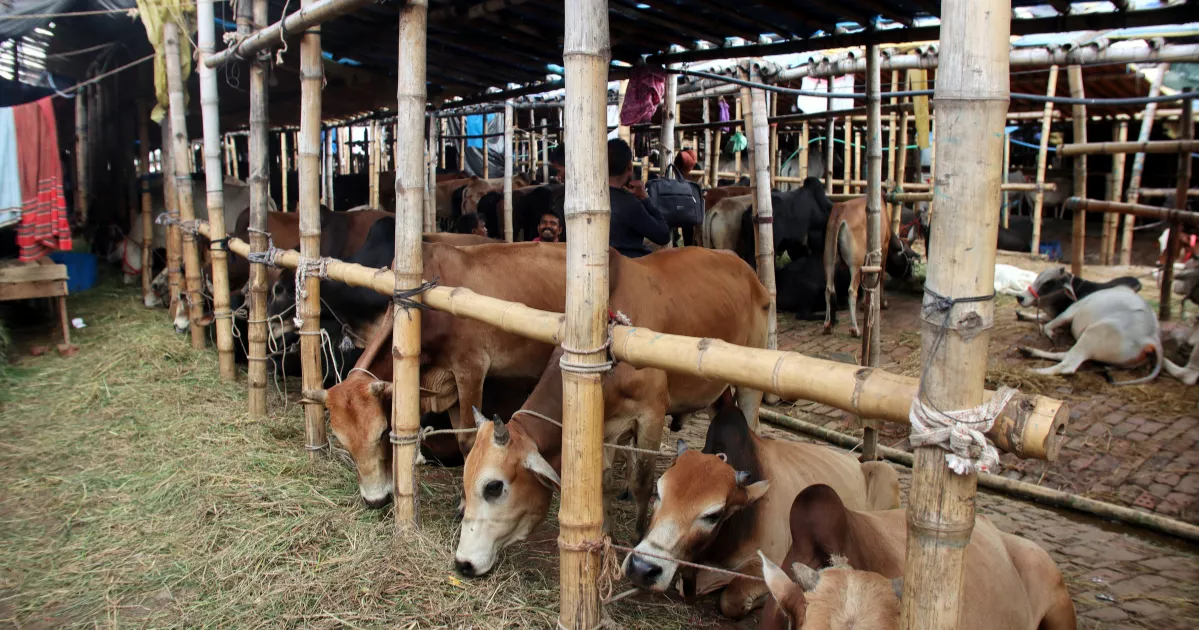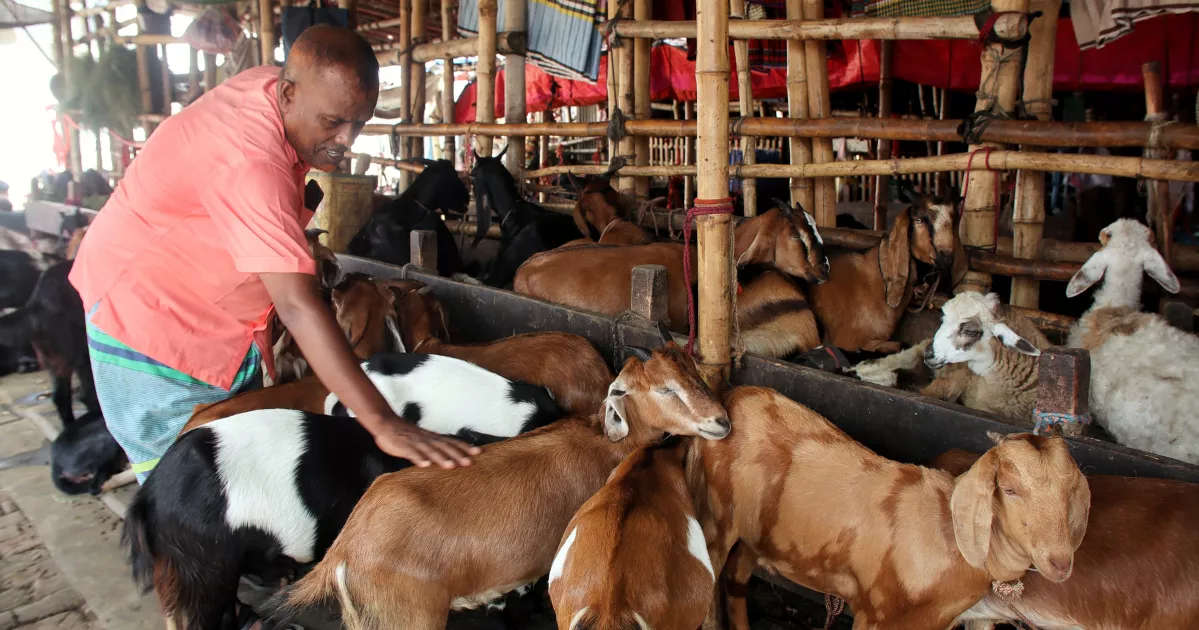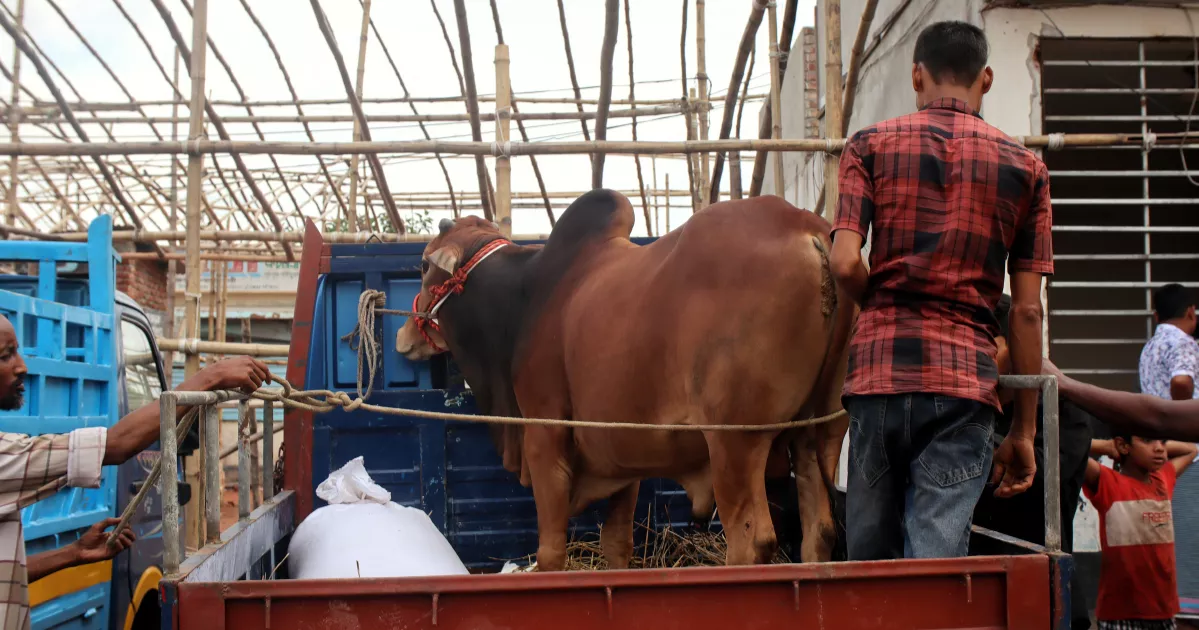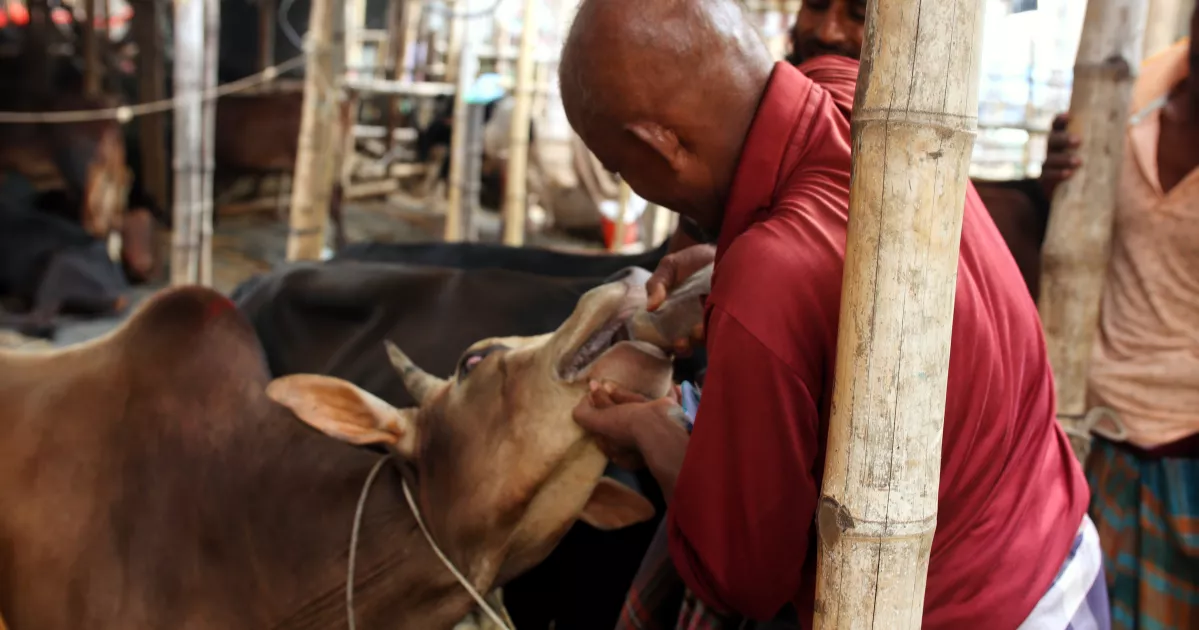Temporary cattle markets have begun taking shape across Dhaka as preparations for Eid-ul-Azha gather pace.
With traders arriving from across the country and designated haats filling up swiftly, the city is entering its annual phase of spirited livestock trade, complete with rising prices, surging crowds and makeshift pens sprawling into the skyline.
The Qurbani haats, as they are locally known, appear each year ahead of Eid-ul-Azha to cater to the seasonal demand for sacrificial animals.
Under the supervision of Dhaka North City Corporation (DNCC) and Dhaka South City Corporation (DSCC), the official markets are typically set up two to three weeks before Eid.
This year, activity began in the final week of May, as traders from rural districts started arriving with cattle—mainly cows, goats, and buffaloes—while a limited number of animals have come from neighbouring India and Nepal due to stricter cross-border regulations.
In 2025, city authorities have allocated 18 official cattle markets across Dhaka.
These include Gabtoli—the city’s only permanent haat—as well as temporary sites such as Sadeque Hossain Khoka Playground, Dholaikhal, Basila, Kamrangirchar, Eastern Housing, Mirpur, and Uttara Sector 15.
Alongside these, smaller unauthorised haats have started forming in some localities.
A visit to several of these sites reveals rapid development. Most of the bamboo structures are already in place, while sellers and agro farm owners have marked their spaces with signboards.
The city’s landscape is changing fast, with livestock-laden pickup trucks navigating busy streets and tarpaulin roofs emerging above makeshift pens.
Eid-ul-Azha: Cattle markets gain momentum in Madaripur
Jamal Hossain, a resident of Mirpur, shared his daily encounter with the Gabtoli haat,“I pass by Gabtoli every day on my way to work. The market is already packed, though it's still technically 'unofficial.' Prices are sky-high and negotiations are tough.”
A cattle trader from Pabna highlighted the cost challenges this year.
“Transport costs have increased this year. Fuel prices and tolls make it difficult for us to offer lower rates. Buyers expect miracles, but we’ve invested a lot,” he said.
At the Dania College Open Market, Abbas Ali from Faridpur stood beside his six oxen and described the mood, “We are ready to sell. But selling in the beginning phase is rare. People are just roaming and discussing about the price.”
He also pointed to rising local-level cattle prices, citing the cost of feed and transport.
Preparation and Management
City corporations have begun laying essential infrastructure at haat sites to ensure smooth operations. Efforts include clean water supply, waste management systems, mobile veterinary clinics, CCTV surveillance, and dedicated security patrols.
Digital payment options are also being promoted to deter fraud and theft.
Online cattle-selling platforms have grown in popularity, offering home delivery services and digital transactions to those preferring to avoid the crowded markets.
Biggest cattle market in the southwest region running without lease



